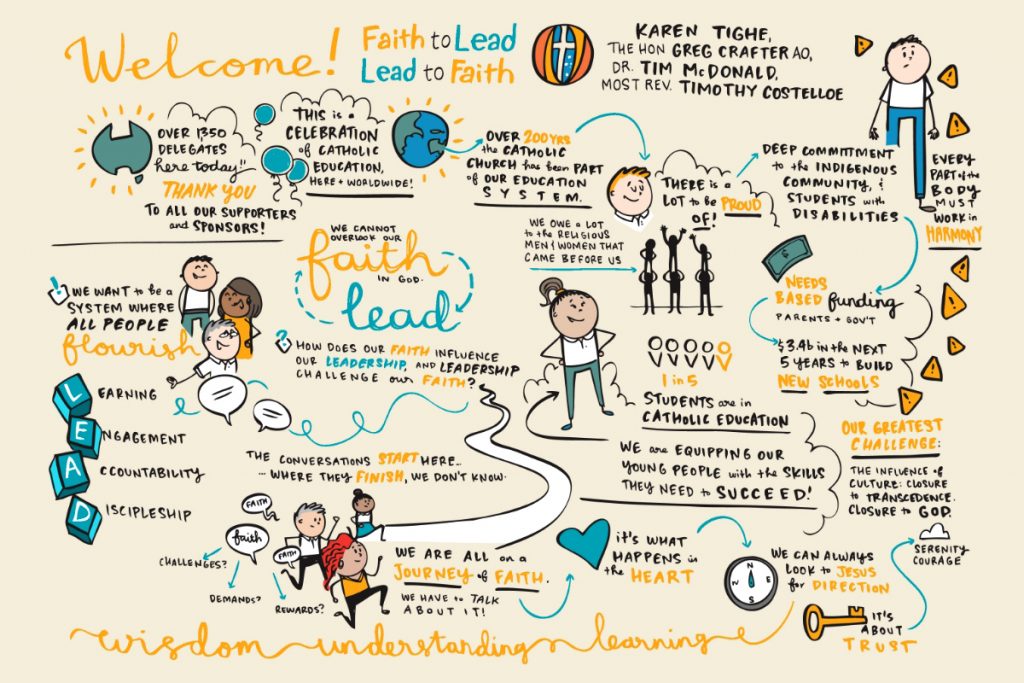
By Rachel Curry
Educators are continuing to reap the benefits of the 2016 National Catholic Education Commission Conference, after pictorial summaries of the keynote presentations were released to the public.
The pictorial summaries, known as graphic recordings, were produced by artist Jessamy Gee from Think in Colour and were one of the talking points of the conference, held from 19 to 22 June in Perth.
Mrs Gee responded to each keynote presentation in real-time, using a whiteboard marker to create a ‘map’ of key themes and ideas, through a combination of words and images.
The graphic recordings have since been enhanced with colour and are available to download from www.ncec2016.com/gallery – a perfect way for educators to remind themselves of what they learnt at the conference.
They summarise presentations from speakers concluding Honduras Cardinal Oscar Andres Rodriguez Maradiaga; Catholic author and leadership expert, Chris Lowney; child health researcher, Donna Cross and Bishop of Broome, Christopher Saunders, as well as the Q&A Panel and Student Voices session.
Mrs Gee told The eRecord that the benefits of graphic recording could be separated into three categories: engagement, comprehension and memory retention.
“Graphic recording engages audiences by providing visual cues in addition to the auditory. It allows the audience to participate in making meaning by using metaphors and imagery that ask our brains to ‘fill the gaps’ and it shakes up our usual thinking patterns,” she said.
“It assists with comprehension by simplifying, synthesising and organising information in a way that makes sense. And finally, graphic recording is a powerful tool for memory retention – studies have shown that you will get six times better memory recall when you add imagery to words, compared to words alone.”
Mrs Gee explained that while she had “always drawn pictures”, her path to becoming a graphic recorder was not straightforward.
She worked in music management, at a community arts organisation for young people with disabilities and in design for an events company, before finding her niche in 2011.
She said the number one skill required to be a graphic recorder was the ability to listen and synthesis information on the go – something which takes a lot of practice – as well as a good sense of design and solid lettering and drawing skills.
“Every presentation is a new challenge. That’s the best bit of this work, I reckon. You have to really be in the moment, get yourself into a flow state and be of service to the content,” she said.
“It’s a bit like surfing or playing the drums. If you think about it too hard, you might lose it entirely.”
Catholic Education WA Religious Education and Faith Formation Consultant, Sandra Peterson, said organisers decided to add graphic recording to the conference to increase the longevity of the speakers’ messages.
“The conference was very memorable, and this is one way of capturing that. It’s also another way of sharing the conference with people who didn’t attend; it helps to stretch the outreach of the conference,” she said.
Mrs Peterson added that Mrs Gee’s presence had “created a buzz” among the conference attendees, who enjoyed the extra dimension of the presentations.
“The feedback around the place to Jessamy’s work has been overwhelmingly positive,” she said.